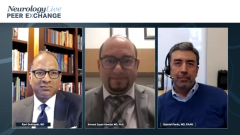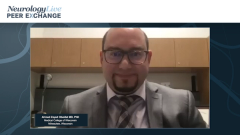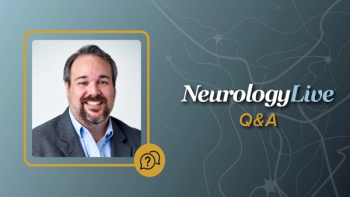
Advances in the Management of Relapsing-Remitting Multiple Sclerosis (RRMS)
Experts in neurology review recent advances in the treatment landscape of relapse-remitting multiple sclerosis (RRMS) and the ever-present challenge of tailoring treatment to individual patients.
Episodes in this series

Ahmed Zayed Obeidat MD, PhD: Hello and welcome to this NeurologyLive®Peer Exchange entitled, “The Shifting Treatment Landscape of Relapsing-Remitting Multiple Sclerosis.” I am Dr Ahmed Obeidat. I’m an associate professor at the Medical College of Wisconsin in Milwaukee. Joining me today are 2 of my esteemed colleagues. First, Dr Ravi Dukkipati, who’s a neurologist in York, Pennsylvania, and is affiliated with multiple hospitals in the area, including WellSpan Gettysburg Hospital and WellSpan York Hospital. Also, Dr Gabriel Pardo is the director of the Oklahoma Medical Research Foundation’s Multiple Sclerosis Center of Excellence in Oklahoma City. Thank you so much for joining us today, and our conversation will be mostly focusing on generic disease-modifying therapies [DMTs] for relapsing-remitting multiple sclerosis [RRMS]. We will discuss expected benefits and challenges with the use of generic DMTs in clinical practice, but we’ll also review some clinical cases and discuss possible treatment plans.
Welcome everyone. Thanks, Dr Pardo and Dr Dukkipati for being with us today. We will start by asking about the current landscape of disease-modifying therapies in MS and how the availability of those therapies improved outcomes maybe for patients living with relapsing multiples sclerosis. I would say they did improve outcomes, and I would like to start with you, Dr Pardo, on this topic. How do you see the development of this field and where we are and where we’re going?
Gabriel Pardo, MD, FAAN: I think the first thing we need to recognize is that it has gotten a whole lot better. The availability of new treatments, specifically with new mechanisms of action, have allowed us to not only have medications that we perceive as being more effective at the outcomes we have been looking at than the ones we have used historically, but with this variability or availability of different mechanisms of action, we are going to be able to tailor the therapies to the needs of our patients in a much better way. So, the evolution has been very exciting.
We have come from the traditional conventional medications that we used for so long, since the 1990s, the interferons, glatiramer acetate, and we have been adding over time some medications that include monoclonal antibodies with the onset of natalizumab in 2004 and 2006. Then we started using oral medications, which implied that we had the advent of small molecules, and that will become relevant for when we’re talking about generics down the road because that for me elevated, in the efficacy realm, our ability to treat our patients.
Following that, we have had other medications that have joined the armamentarium we have for multiple sclerosis, we had the monoclonal antibodies, the anti-CD20 medications, as well as oral cladribine, and alemtuzumab will be the other medication that came along the way. And as we have gone along this path, I think again what we have been finding is that we are increasing the efficacy of our medications. That has had a significant practical implication in the decision-making that allows us to tailor our selections to the patient but has put a lot of emphasis on how we categorize our patients in order to offer them the appropriate medication. There are a lot of elements that are coming to that conversation, things we discuss with the patients, things we have been developing as an MS community, the ability to monitor and assess the risk of our patients to some extent, so we can counsel them properly and make the selection that is needed.
Ahmed Zayed Obeidat MD, PhD: Perfect. This is a great overview of what we have. In a way, you are emphasizing the need for personalized therapy, but also the availability of all these medications we have now, and different mechanisms of action, and different routes of administration. All these are taking into consideration patient factors, disease factors, and multiple other things that we’ll discuss today. Dr Dukkipati, do you have anything to add from your perspective of how things evolved for MS therapeutics?
Ravi Dukkipati, MD: Thank you. I would have to echo what Dr Pardo has mentioned and reinforce this notion that generationally we’ve seen an increase in options, but also the newer drugs as an aggregate offer higher efficacy while not compromising safety. I think that in the end has improved outcomes for patients with multiple sclerosis. Clearly, as we’ll be discussing in a few minutes, there are still unmet needs. But when we look at the platform therapies vs the oral therapies vs the monoclonal antibody therapies, and then of course some of the novel therapies that are juxtaposed in between, we have a wide variety of medications now that approach multiple sclerosis in different perceived mechanisms of action. The challenge remains trying to tailor the right treatment approach for the right patient.
Transcript edited for clarity
Newsletter
Keep your finger on the pulse of neurology—subscribe to NeurologyLive for expert interviews, new data, and breakthrough treatment updates.
































